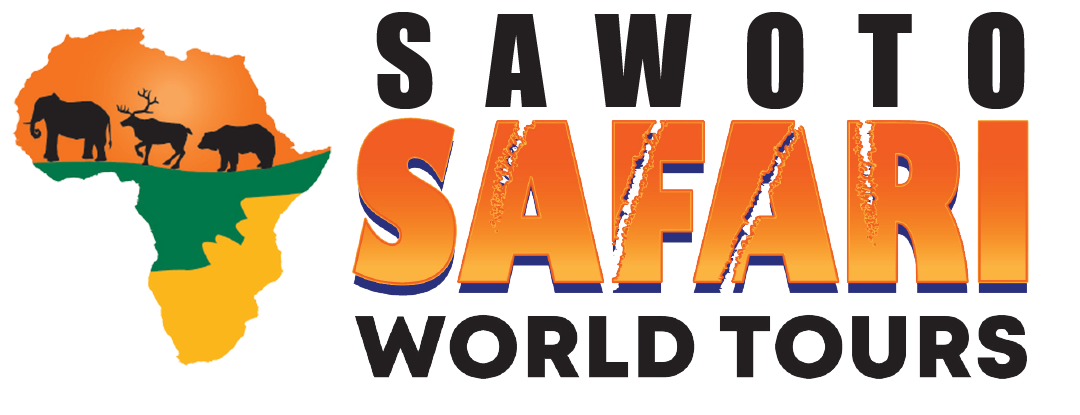Zögern Sie nicht, uns anzurufen. Unser Team ist für Sie da.
+264 81 8211 521
info@safariworldtours.com
Einführung
Die abwechslungsreiche 14-tägige geführte Namibia Lodge Safari ist die perfekte Alternative in diesem faszinierenden Land der Extreme. Namibia ist ein ideales Reiseziel für Reisende auf der Suche nach rauer Naturschönheit, traumhaften Landschaften und einer unglaublichen Tierwelt, ergänzt durch herzliche Gastfreundschaft, einzigartige Kulturen und gutes Essen. Wenn Sie die Weite, Wildnis und Einsamkeit Namibias erleben, werden Sie ständig an die Größe der Natur und der Elemente erinnert.
• Bei der Buchung ist eine nicht rückzahlbare Anzahlung von 10 % erforderlich, um die Buchung der Tour/Aktivität/ zu bestätigen.
Unterkunft oder Autovermietung.
• Die restlichen 90 % müssen spätestens 30 Tage vor der Abreise bezahlt werden.
• Wenn die Tour innerhalb von 40 Tagen oder weniger vor der Buchung stattfindet, ist die vollständige Zahlung erforderlich.
• Ihre Anzahlung kann entweder per Banküberweisung, Online-Lastschrift oder Kreditkartenzahlung erfolgen.
Pick up from the airport. Drive through Windhoek to Arebbusch Travel Lodge. A township tour and dinner will be arranged. We can recommend Joe’s Beer House, Cape Town Fish Market or The Stellenbosch.
Eingeschlossene Aktivitäten
City tours
Übernachtung: Arebbusch Travel Lodge
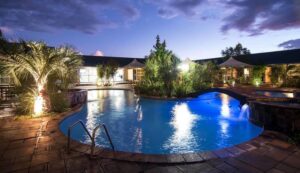
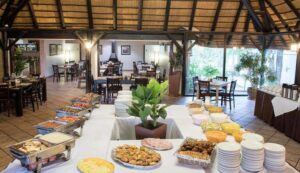
Day two starts with a delicious breakfast in the guesthouse’s sunny breakfast room and a short tour briefing. Take in the solitude and changing colors of the Kalahari and endless views over the desert landscape a fascinating glimpse into the remarkable fauna and flora that survive and thrive in these harsh desert conditions.
Eingeschlossene Aktivitäten
Guided Bush walks
Optionale Aktivitäten
Harnas cheetah feeding
Übernachtung: Harnas Wildlife Foundation
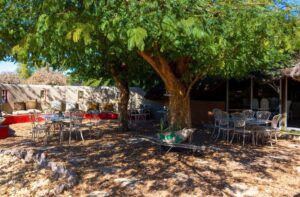
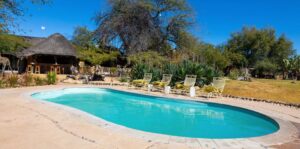
Sie erhalten ein Frühstück und fahren nach Mariental, das in der Nähe des beeindruckenden Hardap-Damms liegt, dem größten Stausee Namibias. Das Hardap-Bewässerungssystem hat diesem trockenen Land Leben eingehaucht, das jetzt fruchtbares Ackerland mit Zitrusfrüchten, Melonen, Luzerne, Wein und Mais bietet und übersät ist mit Straußenfarmen.
Eingeschlossene Aktivitäten
Sunset Nature Drive
Optionale Aktivitäten
guided walk to a community of bushmen where you can learn about tracking and craft making
Übernachtung: Bagatelle Kalahari Game Ranch
Nach dem Frühstück haben Sie den ganzen Tag Zeit, die Aktivitäten fortzusetzen.
Optionale Aktivitäten
Morning scenic drives, afternoon sundowner trips, an early walk with the San, birdwatching, night drives and a leisurely horseback safari.
Übernachtung: Bagatelle Kalahari Game Ranch
Die Gäste fahren zum Fish River Canyon und bleiben 2 Nächte, wo sie zelten werden. Der Fish River Canyon mit seinen wunderschönen Sonnenuntergängen und spektakulären Landschaften.
Eingeschlossene Aktivität
Nature game drive
Übernachtung: Canyon Roadhouse
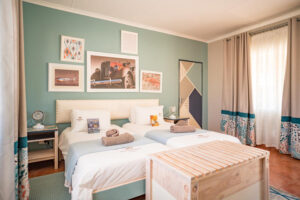
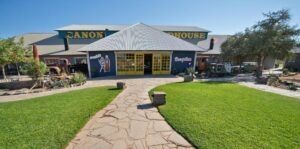
You will have breakfast and a full day to continue with the activities
Eingeschlossene Aktivitäten
Fish River Canyon Viewpoint
Optionale Aktivitäten
Fish River Hiking Trail, scenic chartered flights, horse riding,
Übernachtung: Canyon Roadhouse
From Fish River Canyon you will drive to the small town of Aus. Close by to your lodge are the wild horses the area is famous for explore Lüderitz and enjoy a tour around the old mining town of Kolmanskop. This is a great area for photography the houses are the last remaining memory of ‘Millionaires Avenue’ which is now derelict and filled with sand.
Eingeschlossene Aktivitäten
scenic drive,
Optionale Aktivitäten
Hiking, Mountain biking
Overnight: Klein-Aus Vista Desert Horse Inn
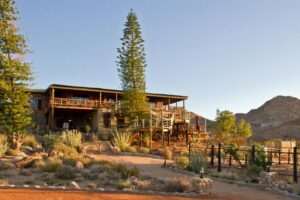

Today after breakfast, you’ll go see the iconic red dunes of Sossusvlei. In the afternoon you will reach your lodge, where you will have to enjoy your dinner.
Eingeschlossene Aktivitäten
Enjoy the sundowner dune drive
Übernachtung: Namib Desert Lodge
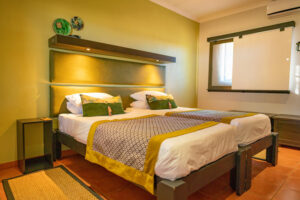
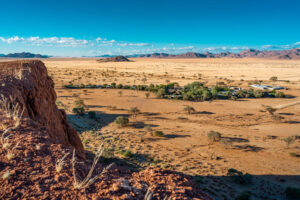
Die Gäste wachen auf und frühstücken, bevor sie in den Park zur Sossuvlei-Exkursion aufbrechen, die die Dünen 45, Deadvlei, Hiddenvlei und Big Daddy umfasst. Der Reiseleiter wird regelmäßig anhalten, damit die Gäste Fotos machen und die Dünen sehen können.
Eingeschlossene Aktivitäten
Sossusvlei-Ausflug (Deadvlei, Big Daddy, Düne 45)
Übernachtung: Namib Desert Lodge
Heute Morgen verlassen wir Sossusvlei und machen uns auf den Weg in die kühlere Küstenstadt Swakopmund am Atlantischen Ozean. Diese Stadt erinnert mit ihren architektonischen Gebäuden, palmengesäumten Straßen, Strandpromenaden, Restaurants, Cafés, Kunstgalerien und Museen an eine deutsche Kleinstadt. Wir verbringen die nächsten 2 Nächte in Swakopmund und genießen die verschiedenen Aktivitäten, die dort angeboten werden.
Eingeschlossene Aktivitäten
2-Hour Quad Biking, Sand-Boarding, sightseeing & Township tour
Optionale Aktivitäten
Living Dunes Experience from Swakopmund; Scenic Desert Tour, Sky diving,
set horse riding and paragliding
Übernachtung: Hotel Pension A La Mer
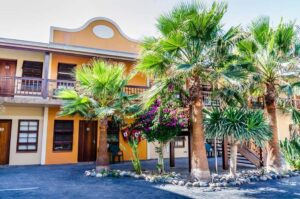
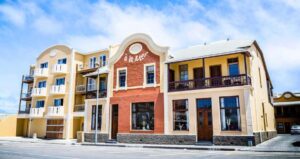
Unser nächster Halt ist der Brandberg, wo wir direkt am trockenen Ugab-Fluss, der Heimat der seltenen Wüstenelefanten, übernachten. Wir erkunden die Berge zu Fuß mit unseren einheimischen Führern, die uns durch diese mit Felskunst geschmückte Region führen.
Eingeschlossene Aktivitäten
Visit the white lady painting, unique bushman painting
Übernachtung: Brandberg White Lady Lodge
Sie fahren zum Etosha-Nationalpark und bleiben 2 Nächte. Das Hauptmerkmal des Parks ist eine Salzpfanne, die so groß ist, dass man sie vom Weltraum aus sehen kann. Dennoch gibt es eine große Anzahl von Wildtieren, die sich um die Wasserlöcher versammeln, so dass Sie fast garantiert Wildtiere sehen können. Gleichzeitig ist der Etoscha-Nationalpark eines der am leichtesten zugänglichen Wildreservate in Namibia und im südlichen Afrika, und die Konzentration von Großwild an den Wasserlöchern macht die Wildbeobachtung unglaublich lohnend. Vielleicht müssen Sie nicht einmal Ihr Camp verlassen, um Löwen, Elefanten, Nashörner und jede Menge Antilopen und Zebras zu sehen, die ihren Durst löschen.
Eingeschlossene Aktivitäten
Game drive
Übernachtung: Etosha Safari Camp
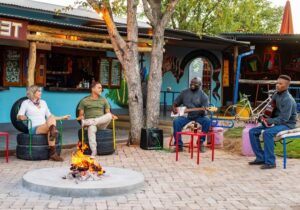
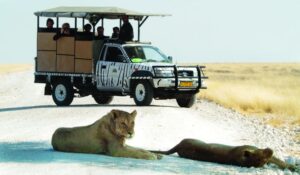
Die Kunden frühstücken, denn heute ist ein ganzer Tag der Safaripirsch, der viele Gelegenheiten für gute Sichtungen und spektakuläre Fotos bietet. Nach dem Frühstück in der Lodge begeben wir uns auf eine morgendliche Pirschfahrt.
Eingeschlossene Aktivitäten
Ganztägige Pirschfahrt
Übernachtung: Etosha Safari Camp
Sie frühstücken und fahren zurück nach Windhoek.
Der Name Windhoek ist aus dem Afrikaans abgeleitet und bedeutet "windige Ecke". Die frühere Schreibweise zu Beginn der deutschen Kolonialzeit "Windhuk" ist nicht mehr in Gebrauch. Die San (Buschmänner) besiedelten das Gebiet um Windhoek bereits vor Tausenden von Jahren.
Die Alte Feste ist das älteste erhaltene Gebäude der Stadt, die sich in der Folge um sie herum entwickelte. Nach der deutschen Kapitulation im Ersten Weltkrieg in Südwestafrika wurde Windhoek im März 1915 von der südafrikanischen Armee besetzt. Die Alte Feste diente nun als militärisches Hauptquartier für die Truppen der Südafrikanischen Union.
Windhoek ist eines der weltweit wichtigsten Zentren für den Handel mit Karakul-Schafsfellen. Windhoek hat zwei traditionelle Namen: Otjomuise und /Ae //Gams. Der Name Windhoek leitet sich möglicherweise von dem Wort "Winterhoek" ab, dem Namen der Berge um Tulbagh in Südafrika. Windhoek wurde am 18. Oktober 1890 formell gegründet.
Die Kalahari-Wüste erstreckt sich über mehrere Länder und bietet Safarierlebnisse, die in Afrika ihresgleichen suchen. Jede Region bietet ein einzigartiges Erlebnis mit hervorragenden Sichtungen von Antilopenarten, Großkatzen und einer unglaublichen Vogelwelt, die sich an die rauen Bedingungen angepasst hat.
Ein Urlaub in der Kalahari-Wüste bietet dem Reisenden jedoch etwas ganz Besonderes. Atemberaubende Landschaften mit roten Sanddünen, die sich in den Sommermonaten grün färben können, eine faszinierende Pflanzen- und Tierwelt und ein Einblick in das Leben der San/Buschmänner erwarten diejenigen, die sich für eine Reise in die Kalahari entscheiden.
Die Kalahari-Wüste ist eine riesige Halbtrocken-Savanne im südlichen Afrika und erstreckt sich über eine Fläche von etwa 900 000 Quadratkilometern. Die Wüste besteht aus einer Reihe unterschiedlicher Landschaften, die sich nicht auf ein Land beschränken, sondern sich über Südafrika, Botsuana und Namibia erstrecken.
Die Kalahari-Wüste wird hauptsächlich von Bantu-Sprechern und Khoisan-sprechenden San bewohnt, mit einer kleinen Anzahl von Europäern.
Obwohl alle San traditionell Jäger und Sammler waren, gab es erhebliche kulturelle und soziale Unterschiede zwischen den Gruppen. So unterhielt eine Reihe von Gruppen langjährige Beziehungen zu bantusprachigen Viehzüchtern, während andere Gruppen - bis in die 1970er Jahre - ausschließlich als autonome Jäger und Sammler lebten.
Die nördliche Kalahari beherbergt eine beträchtliche Population von Giraffen, Zebras, Elefanten, Büffeln und Antilopen (Pferdeantilopen, Rappenantilopen, Zieselantilopen und Impalas); Raubtiere wie Löwen, Geparden, Leoparden, wilde Jagdhunde und Füchse; andere große und mittelgroße Säugetiere wie Schakale, Hyänen, Warzenschweine, Paviane und Dachse,
Mariental ist die Verwaltungshauptstadt der Hardap-Region in einem Gebiet, das seit langem ein Zentrum für das Volk der Nama ist. Es liegt in der Nähe des Hardap-Staudamms, des zweitgrößten Stausees in Namibia.
Mariental ist eine Stadt in der Hardap-Region in Namibia, im zentralen Teil des Landes. Sie ist die Hauptstadt der Region und bekannt für ihre Agrarindustrie, einschließlich Viehzucht und Getreideanbau. Mariental befindet sich in einer halbtrockenen Region, hat aber aufgrund seiner Höhenlage ein relativ mildes Klima.
Die von rheinischen (deutsch-lutherischen) Missionaren gegründete Stadt wurde 1912 als Eisenbahnhaltestelle zwischen Windhoek und Keetmanshoop gegründet und nach Maria, der Frau des ersten kolonialen Siedlers der Gegend, Hermann Brandt, benannt. Hier befindet sich die älteste niederländisch-reformierte Kirchengemeinde in Namibia, die 1898 gegründet wurde.
Mariental wurde 1912 als Eisenbahnhaltestelle zwischen Windhoek und Keetmanshoop gegründet und von örtlichen rheinischen (deutsch-lutherischen) Missionaren benannt. Es wurde 1920 zur Stadt und 1946 zur Gemeinde erklärt. Eine wichtige wirtschaftliche Funktion der Stadt ist die Verarbeitung und der Transport von Karakulhäuten.
Mariental ist eine Stadt mit 10.000 Einwohnern im südlichen Zentrum Namibias und liegt an der Nationalstraße B1 232 Kilometer nördlich von Keetmanshoop und 274 Kilometer südöstlich von Windhoek. Sie liegt auf einer Höhe von 1.090 Metern.
Der Fischfluss-Canyon in Namibia ist einer der größten Canyons in Afrika und auf der ganzen Welt. Der Fischfluss hat den Canyon über Millionen von Jahren aus dem Felsen gemeißelt. Der Fish River Canyon ist zwischen 300 und 700 Meter tief und etwa 160 Kilometer lang.
Die Anfänge des Canyons liegen etwa 500 Millionen Jahre zurück, als ein Bruch in der Erdkruste zum Einsturz des Talbodens führte und ein breites, in Nord-Süd-Richtung verlaufendes Tal bildete. Gletscher, die sich nach Süden bewegten, vertieften die Schlucht, und weitere Verwerfungen und Erosion trugen zu diesem Effekt bei.
Der Fish River Canyon, Afrikas Antwort auf den Grand Canyon, ist einer der besten Orte in Namibia, um die raue Majestät der Natur zu bewundern. Mit einer Breite von 27 km, einer Tiefe von 550 m und einer Länge von 160 km ist er der größte Canyon des Kontinents und das größte geologische Wunder Namibias.
Er weist eine gigantische Schlucht auf, die insgesamt etwa 100 Meilen (160 km) lang, bis zu 27 km breit und an manchen Stellen fast 550 Meter tief ist. Der Fischfluss ist der längste Fluss im Landesinneren von Namibia. Er schneidet tief in die Hochebene ein, die heute trocken, steinig und nur spärlich mit dürreresistenten Pflanzen bewachsen ist.
Die meisten Aktivitäten, die man dort ausübt, sind Wanderungen, bei denen man den Canyon mit den Füßen erkundet.
Fischfluss-Schluchtweg
Aus ist ein kleines Dorf in der Region Karas in Namibia. Dieses Dorf ist vor allem für sein unberechenbares Wetter und seine Geschichte als Kriegsgefangenenlager bekannt. Als die deutschen Kolonialtruppen 1915 vor den südafrikanischen Truppen kapitulierten, wurde einige Kilometer außerhalb von Aus ein Lager für die Kriegsgefangenen eingerichtet.
Das Wetter in Aus kann extrem sein, sehr kalt im Winter und heiß im Sommer. Außerdem ist es unberechenbar - was auf die Nähe zum Kap zurückzuführen ist.
Aus bietet viele interessante Aktivitäten und Attraktionen. Es gibt für jedes Familienmitglied etwas zu tun. Dazu gehört auch ein neues Museum, das mehr Besucher dazu anregen soll, innezuhalten und etwas über eine Gegend zu entdecken, die allzu oft ignoriert wird. Am Eingang des Dorfes befindet sich ein modernes Informationszentrum, eines der wenigen in Namibia, das auch am Wochenende geöffnet hat. Es ist auf jeden Fall einen Besuch wert, und Sie können auch den Beobachtungsposten besuchen, um die wilden Pferde in Garub zu beobachten.
Sossusvlei (manchmal auch Sossus Vlei geschrieben) ist eine von hohen roten Dünen umgebene Salz- und Lehmpfanne im südlichen Teil der Namib-Wüste, im Namib-Naukluft-Nationalpark von Namibia.
In Sossusvlei herrscht ein heißes Wüstenklima. Die Jahresdurchschnittstemperatur liegt bei 24 °C. Im Winter liegen die nächtlichen Tiefstwerte bei 10 °C, während die Temperaturen im Sommer oft bis zu 40 °C erreichen.
Diese Dünen gehören zu den höchsten der Welt; viele von ihnen sind über 200 Meter hoch, wobei die höchste Düne, die den Spitznamen Big Daddy trägt, etwa 325 Meter hoch ist. Die höchste Düne in der Namib-Wüste, die Düne 7, ist jedoch 388 Meter hoch.
Die 170 Meter hohe Düne 45 ist die bekannteste Düne, die von den Besuchern des Sossusvlei-Gebietes bestiegen wird. Dieser relativ "einfache" Aufstieg dauert für die meisten Menschen zwischen 40 Minuten und einer Stunde. Der Abstieg dauert weniger als 5 Minuten.
Die Sanddünen im Sossusvlei-Gebiet sind aufgrund ihrer Form, die entsteht, wenn der Wind aus allen Richtungen kommt, als "Sterndünen" bekannt. Dadurch bewegen sich die Dünen kaum. 8. Der Sand in der Region erhält seine charakteristische rote Farbe durch die Eisenoxidschicht, mit der er überzogen ist.
Es ist eine schöne Strandstadt mit starkem deutschem Einfluss, architektonisch und kulturell. Die Menschen hier sind sehr freundlich und hilfsbereit. Es ist auch eine touristische Stadt mit vielen lokal gefertigten Skulpturen, die für Touristen zugänglich sind.
Walvis Bay (was so viel wie "Walbucht" bedeutet) scheint größer und weitläufiger zu sein als Swakopmund.
Das Brandberg-Massiv oder die Brandberg-Intrusion ist eine granitische Intrusion, die ein kuppelförmiges Massiv bildet. Es entstand während des frühkreidezeitlichen Rifting, das zur Öffnung des Südatlantiks führte.
Das Gebiet verfügt über ein außergewöhnlich reiches paläoarchäologisches Erbe mit einer hohen Konzentration an prähistorischer Felskunst (mehr als 43 000 Malereien und 900 Fundstellen). Die beiden Gattungen der Felskunst (Gravuren und Malereien) sind im Brandberg eng miteinander verbunden, und es wurden mehr als 120 archäologische Stätten erfasst.
Vor über 120 Millionen Jahren durchschlug eine einzige Granitmasse die Erdkruste und drang in das Herz der Namib-Wüste im heutigen Norden Namibias ein. Heute überragt der Felsberg, das Brandberg-Massiv, die darunter liegende trockene Wüste.
Die Formation ist ein Überbleibsel einer langen Periode turbulenter vulkanischer und geologischer Aktivitäten auf der Erde, während der der südliche Superkontinent Gondwana auseinanderbrach. Der Berg beeinflusst das lokale Klima, indem er an seinen Flanken mehr Regen anzieht als die darunter liegende Wüste erhält.
Etosha bedeutet "das große weiße Gebiet" und bezieht sich auf die riesige Salzpfanne. Dies ist ein beeindruckender Anblick, denn es ist sicherlich die größte Salzpfanne in Afrika. Wenn es regnet, ziehen die Wasserbecken in der Pfanne Hunderttausende von Flamingos an!
Der Wildreichtum im Etoscha-Nationalpark ist etwas unerwartet und zeigt einige der häufigsten und seltensten Wildtierarten. Die Gebiete mit dichterer Vegetation sind die Heimat von Elefanten (einige der größten in Afrika aufgrund der Vitamine und Nährstoffe im Boden), dem gefährdeten Spitzmaulnashorn und sogar Leoparden.
Mopane ist der häufigste Baum und macht schätzungsweise 80 % aller Bäume im Park aus. Das Sandveld in der nordöstlichen Ecke von Etosha wird von Akazien und Terminalia-Bäumen dominiert. Tamboti-Bäume prägen die Waldgebiete südlich des Sandvelds.
Die 4730 km2 große Etosha-Pfanne ist eine riesige, unberührte ovale Salzpfanne im Norden Namibias. Sie ist das zentrale Element des namibischen Etosha-Nationalparks. Sie ist der Endpunkt des Cuvelai Entwässerungssystems im untersten Teil des Ovambo Beckens auf einer Höhe zwischen 1.071 und 1.086 m über dem Meeresspiegel.
Die Etosha-Pfanne, natürlich, eine reiche Vogel- und Tierwelt, weite offene Flächen, atemberaubende Sonnenuntergänge, zahlreiche Wasserlöcher, viele Essensmöglichkeiten und herzliche namibische Gastfreundschaft.
Der Park beherbergt etwa 114 Säugetierarten, 340 Vogelarten, 110 Reptilienarten, 16 Amphibienarten und 1 Fischart (bei Hochwasser bis zu 49 Fischarten). Der Etosha-Nationalpark ist auch der wichtigste Hüter des Spitzmaulnashorns in der Welt.
